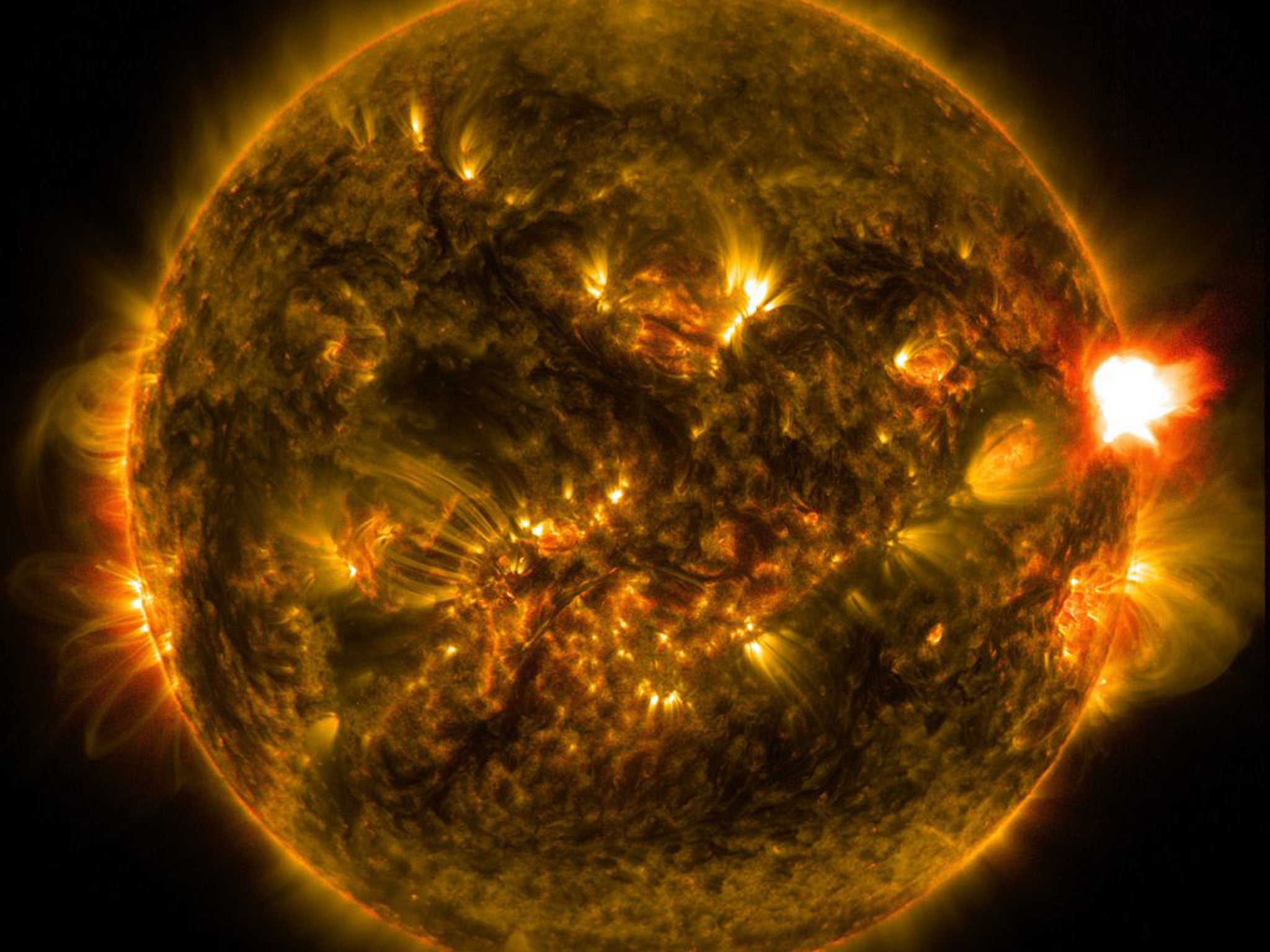Nasa releases spectacular images of 2015's first solar flare
The energy released from one solar flare is the equivalent to millions of 100-megaton atomic bombs exploding at the same time

Your support helps us to tell the story
From reproductive rights to climate change to Big Tech, The Independent is on the ground when the story is developing. Whether it's investigating the financials of Elon Musk's pro-Trump PAC or producing our latest documentary, 'The A Word', which shines a light on the American women fighting for reproductive rights, we know how important it is to parse out the facts from the messaging.
At such a critical moment in US history, we need reporters on the ground. Your donation allows us to keep sending journalists to speak to both sides of the story.
The Independent is trusted by Americans across the entire political spectrum. And unlike many other quality news outlets, we choose not to lock Americans out of our reporting and analysis with paywalls. We believe quality journalism should be available to everyone, paid for by those who can afford it.
Your support makes all the difference.Nasa has released incredible images showing the Sun’s first solar flare of 2015, which led to a radio blackout in some parts of the world.
The images were captured by cameras at NASA’s sun-watching satellite the Solar Dynamics Observatory (SDO), and show the mid-level flare emitted by the sun in the early hours of Tuesday morning.
In the images, we see rings of light come out of the sun’s surface and bright flashes of light being created across the planet’s surface.
According to Nasa, the energy released from one solar flare is the equivalent to 100-megaton atomic bombs.
When a flare occurs, radiation across the entire electromagnetic spectrum is released, reaching all corners of the solar system.
While the earth’s atmosphere prevents solar flares from harming humans directly, the flares have been known to cause damage to satellites, radio systems and power grids on earth.
On Tuesday, some mariner and ham radio operators did report temporary blackouts to their communication systems around the time the solar flare happened.
Nasa said the solar flare on Sunday was an M5 class flare, which is a tenth of the size of the most intense X class flares.
Join our commenting forum
Join thought-provoking conversations, follow other Independent readers and see their replies
Comments